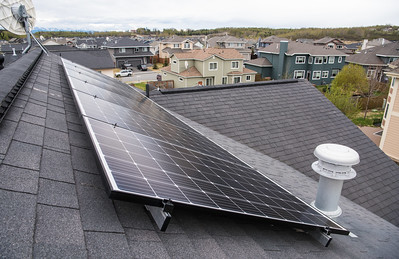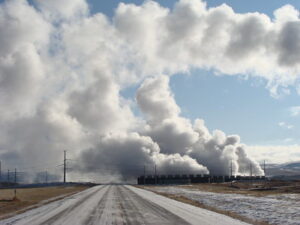In this month’s general election, City of Ann Arbor voters adopted a new Sustainable Energy Utility (SEU). The opt-in utility is part of the City’s A2Zero initiative, which endeavors to achieve carbon neutrality by 2030.
When you hear the word “utility,” you may think of corporations like DTE. The new SEU won’t assume the assets (or responsibilities) of existing utilities, though. Instead, it will enable residents and commercial entities in Ann Arbor to participate in sustainable energy generation, collection, and distribution. The utility promises to help residents lower the cost of small solar installations.
Because the utility is demand-driven, it is unlikely to reduce energy costs significantly in the initial years. As more individuals participate, the SEU is likely to generate a noticeable impact on energy costs. This is not a new concept. Delaware and Washington, DC also have SEUs that have operated successfully for more than a decade.
Whether or not you agree with the concept of sustainable energy production, the reality is that state law mandates the use of clean energy sources by 2040 and carbon neutrality by 2050. This mandate, along with strategies like the SEU, opens opportunities to develop and extend the production of clean energy throughout the area.
I was talking with a friend about the construction of a new solar farm near Milan. The facility doesn’t have a lot of popular support and will not generate any significant additional revenues for Augusta and York townships, but that did not hinder their approvals. The farm, which is divided by an existing railroad, will occupy about 850 acres. Ranger Power will operate the solar farm on land leased from area landowners.
Sustainable energy mandate factors into area’s energy needs
Current solar strategies include locating solar installations on farmland. On the one hand, the land is largely clear of major obstructions. On the other hand, it subtracts potentially productive farmland while the solar farm is in operation.
The new SEU may pave the way to use Greenbelt land for solar installations that would support the newly created utility. (Leasing the Greenbelt land for farming hasn’t been super successful so far.) Solar farms can create jobs, most of which are temporary and related to construction. They also create a small number of permanent maintenance and operations positions.
In Michigan, solar energy does not comprise a significant percentage of sustainable energy production. Even with technological advancements, it might never amount to much. Its application may be more effective as individual installations for private residences, designed to reduce a homeowner’s dependence on the grid. (Residential customers pay the highest per-kWh cost for their electricity, so it makes sense to reduce their usage of commercially produced electricity.)
However, the construction of solar farms and Ann Arbor’s new SEU likely point to the need to consider sustainable energy technician programs at Washtenaw Community College. The area’s interest in and demand for sustainable energy is not likely to decrease. Someone is going to meet that demand. Doesn’t it make sense to train local workers to benefit from these opportunities?
Photo Credit: National Renewable Energy Lab , via Flickr
















